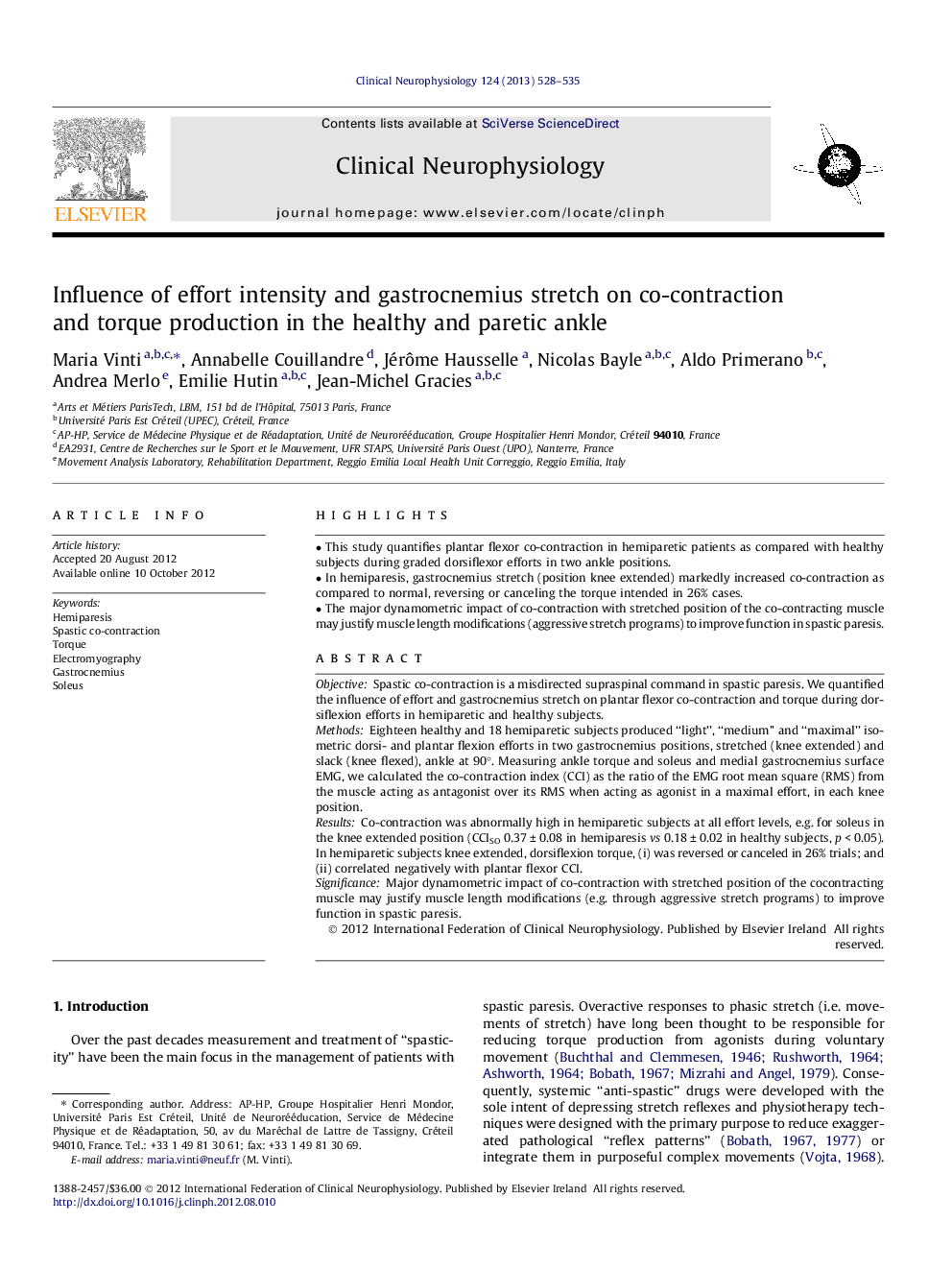| Article ID | Journal | Published Year | Pages | File Type |
|---|---|---|---|---|
| 3044365 | Clinical Neurophysiology | 2013 | 8 Pages |
ObjectiveSpastic co-contraction is a misdirected supraspinal command in spastic paresis. We quantified the influence of effort and gastrocnemius stretch on plantar flexor co-contraction and torque during dorsiflexion efforts in hemiparetic and healthy subjects.MethodsEighteen healthy and 18 hemiparetic subjects produced “light”, “medium” and “maximal” isometric dorsi- and plantar flexion efforts in two gastrocnemius positions, stretched (knee extended) and slack (knee flexed), ankle at 90°. Measuring ankle torque and soleus and medial gastrocnemius surface EMG, we calculated the co-contraction index (CCI) as the ratio of the EMG root mean square (RMS) from the muscle acting as antagonist over its RMS when acting as agonist in a maximal effort, in each knee position.ResultsCo-contraction was abnormally high in hemiparetic subjects at all effort levels, e.g. for soleus in the knee extended position (CCISO 0.37 ± 0.08 in hemiparesis vs 0.18 ± 0.02 in healthy subjects, p < 0.05). In hemiparetic subjects knee extended, dorsiflexion torque, (i) was reversed or canceled in 26% trials; and (ii) correlated negatively with plantar flexor CCI.SignificanceMajor dynamometric impact of co-contraction with stretched position of the cocontracting muscle may justify muscle length modifications (e.g. through aggressive stretch programs) to improve function in spastic paresis.
► This study quantifies plantar flexor co-contraction in hemiparetic patients as compared with healthy subjects during graded dorsiflexor efforts in two ankle positions. ► In hemiparesis, gastrocnemius stretch (position knee extended) markedly increased co-contraction as compared to normal, reversing or canceling the torque intended in 26% cases. ► The major dynamometric impact of co-contraction with stretched position of the co-contracting muscle may justify muscle length modifications (aggressive stretch programs) to improve function in spastic paresis.
